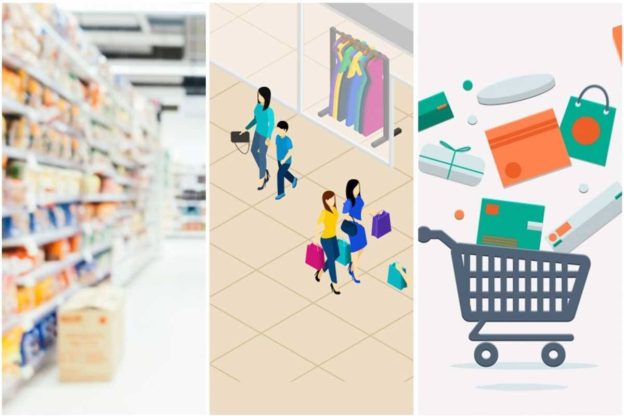The Indian retail sector as we know it today is an incredible growth story spanning two-and-a-half decades. As consumers, we have seen how the sector has evolved.
The Indian retail sector as we know it today is an incredible growth story spanning two-and-a-half decades. As consumers, we have seen how the sector has evolved. It’s now hard to imagine how two decades back, shopping was a chore that needed so much planning. Interestingly, there’s space for everyone – from Kirana stores to modern retailers to e-commerce players and the opportunity has expanded from the first 100 million users to the next billion.
At the heart of this shift lies the customer and their rapidly changing needs, influenced by unending choices, real-time comparisons with competing products, and the ease-of-use of omnichannel platforms. Today, digitally-savvy consumers have spread across the length and breadth of the country. Whether you are located in a Tier 3 city or driving down Connaught Place, information accessibility is the same. Companies have also responded with great speed through digital tech adoption to give us (24/7/365) what we often take for granted – a hyper-personalized customer experience.
The pandemic brought to the fore many inspiring stories about companies pivoting to new growth opportunities through digital. Amongst the most powerful narratives to come out is the way Kirana stores adopted digital – from receiving orders online to order fulfillment through hyperlocal integrated supply chains to digital payments, the loop was completed. In turn, they became the life-line for the nation which was under lockdown for a major part of the year. Recent media surveys peg the figure at a staggering 1 million – the number of Kirana stores that went online last year.
The pandemic also catalyzed the expanding outreach of e-commerce companies to smaller cities & towns – tier 3 & 4. Deep digital penetration has brought the hinterland on the same page (or at least very close) as metros. Giant brands such as Flipkart, Amazon & Paytm Mall (among others) saw massive spikes in consumer buying behaviour from these locations. This has also necessitated a geographical spread where retailers are trying to get closer to their customers and meet their SLAs.
This evolving retail sector – almost its 4.0 avtaar that we are now in, is not about offline or online but O+O, Online AND Offline which is the convergence of traditional AND online channels into a digitally-enabled ecosystem, characterized by the interplay of tech solutions and fully leveraged by digital-savvy customers. The example of Aditi Electronics, a small trader in consumer electronics & durables, stands out. While speaking to NASSCOM the founder said, “I started brick & mortar operations two years ago and today, 80% of my sales are through online.”
It is a massive opportunity for the nation which will unfold over the next 10 years. And there are three lenses through which it can be seen – retail industry growth, employment booster, and exports growth. While enabling additional revenue creation of ~640 billion dollars and generating 12 million jobs, the O+O model can immensely expand online-led exports from ~2.1 billion dollars in FY20 to ~125 billion dollars by 2030. In the process, the sectoral contribution to total exports will increase whoppingly as well – from 0.2% presently to 8.9% by 2030.
Four factors are enabling this rapid transformation – experience personalization, operations digitization, supply chain integration, and fintech lending the backbone to the O+O framework. Aided by massive data-led insights and the adoption of cutting-edge tech such as AI, NLP, Big Data, Cloud, and Immersive Media, the degree of personalization (device-agnostic) continues to go granular. The in-store experience and operations are integrated with back-end systems including inventory management. In as much, integrated supply chains have greatly enhanced local delivery capabilities as we saw last year. Better connectivity, governmental push for digital transactions, the rise of fintech innovators, and contactless payments rising across the board have all concertedly contributed to this massive transformation.
But we must also remember that retailers of the 4.0 era must not be fixated by omni channel presence only; the bigger focus should be on data-led insights of customers and how quickly they can be acted upon. Social media has empowered people with information in real-time and millennials (a large customer cohort) are extremely savvy digitally and they can make a switch very quickly if their needs aren’t met. This brings to the fore – speed. Integrated systems and a collaborative approach will majorly impact response time.
Finally, we need the regulatory environment to be favourable for domestic players and retail exporters. Some of them are already in place, and MSMEs, through training & awareness-building measures can be encouraged further to embrace digital in a much bigger way. While speaking at the launch of the NASSCOM report, Retail 4.0 India Story, Shri Amitabh Kant, CEO of Niti Aayog said, the Union government is in the process of formulating the National Retail Trade Policy which would not only create a conducive environment for retail trade but would also simplify policies hindering the growth of the sector. It will indeed be a big step forward in realizing the sector’s true potential in the next decade or so.
A global retailer with a massive presence in India said recently, “we are in the business of creating happiness.” For them and a million other retailers, this will happen many times faster in the 4.0 era where offline and online retail has already converged.
https://www.financialexpress.com/industry/indian-retail-sector-goes-digital-may-create-millions-of-jobs-in-next-decade-with-online-offline-convergence/2223237/







